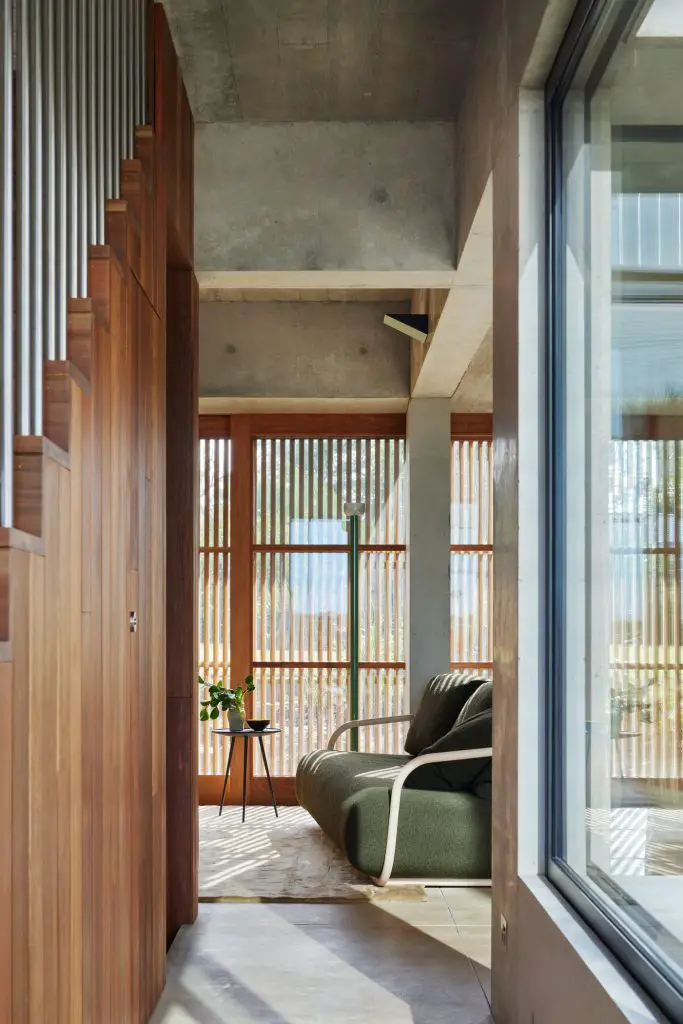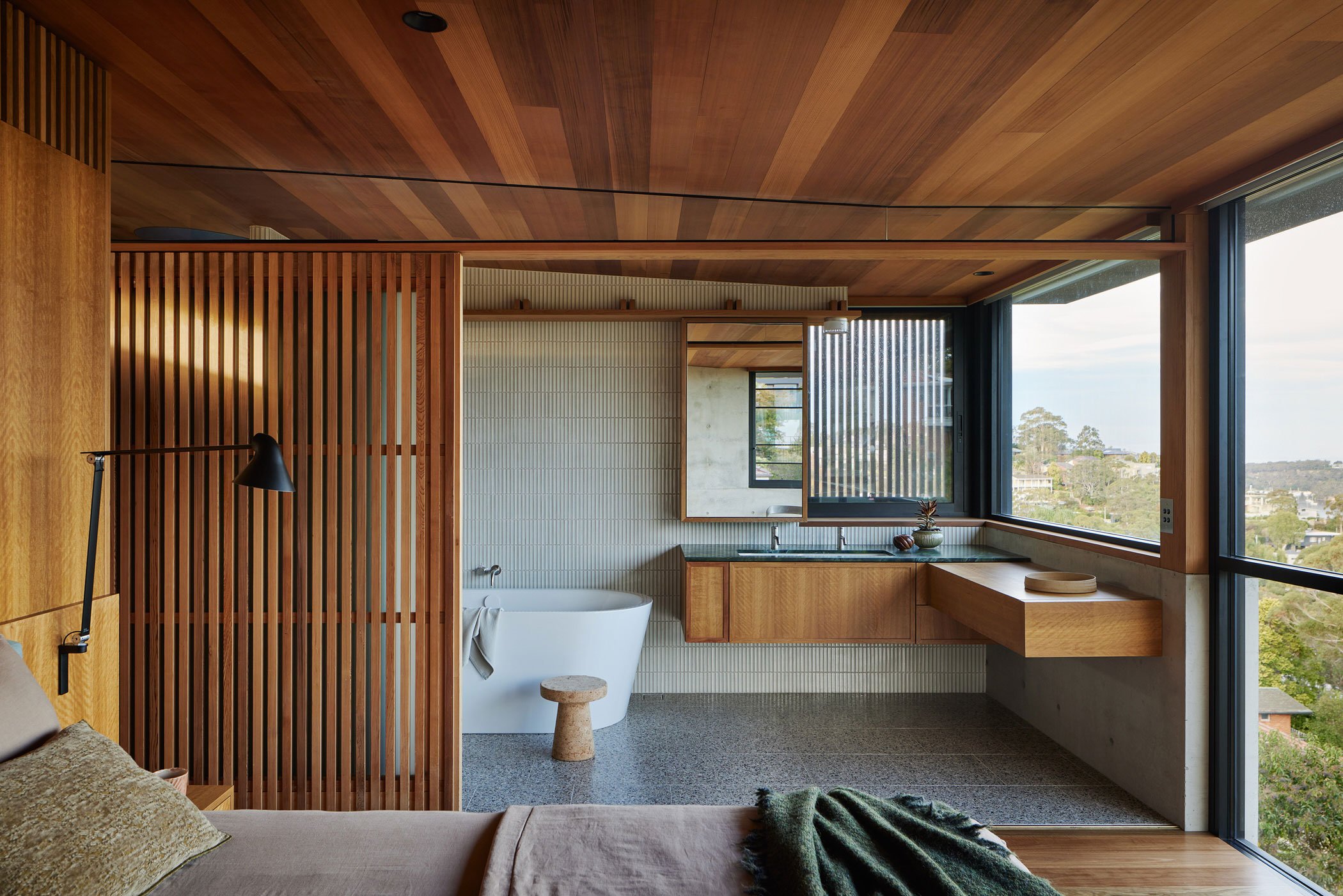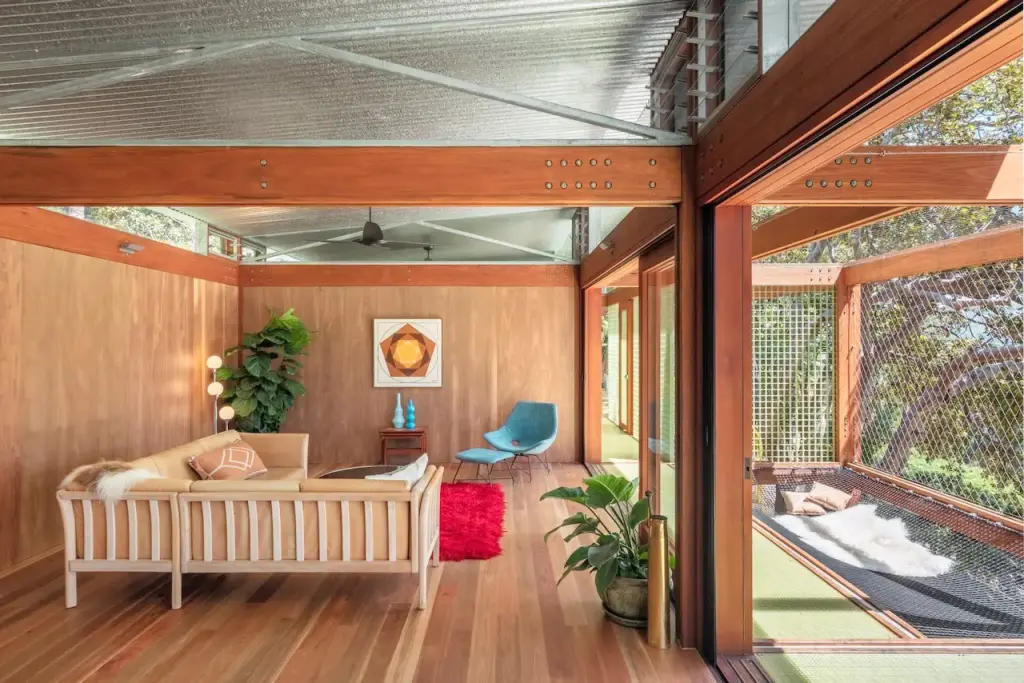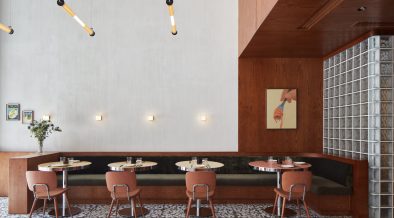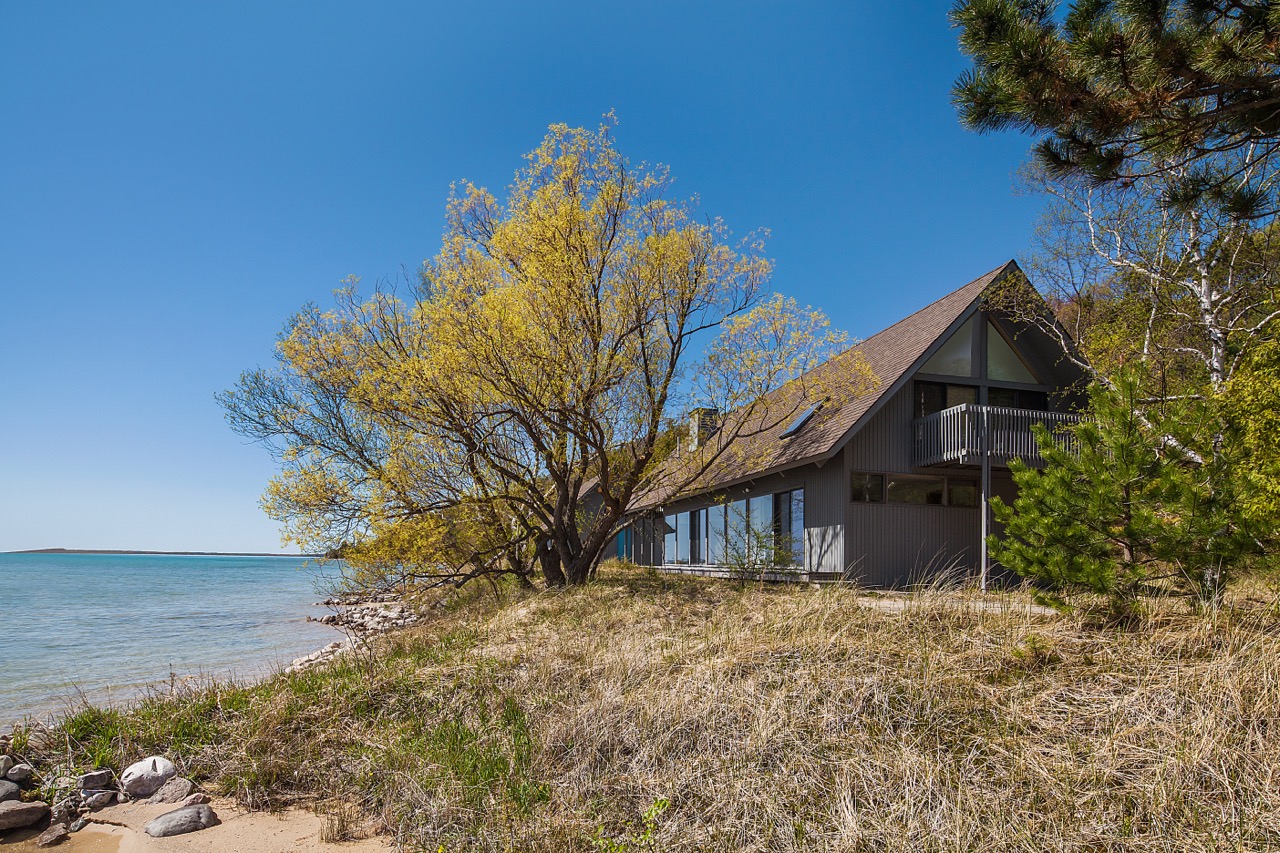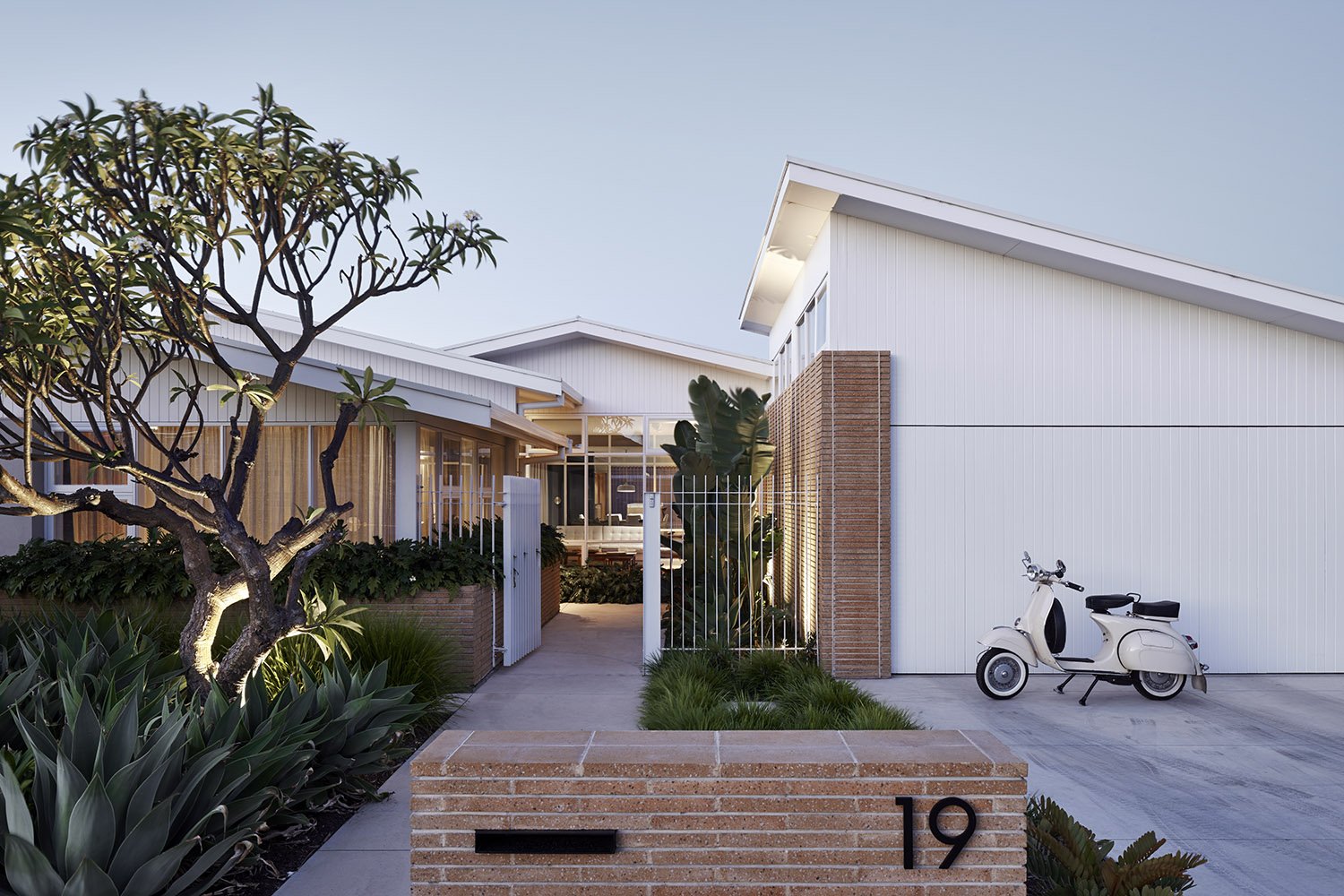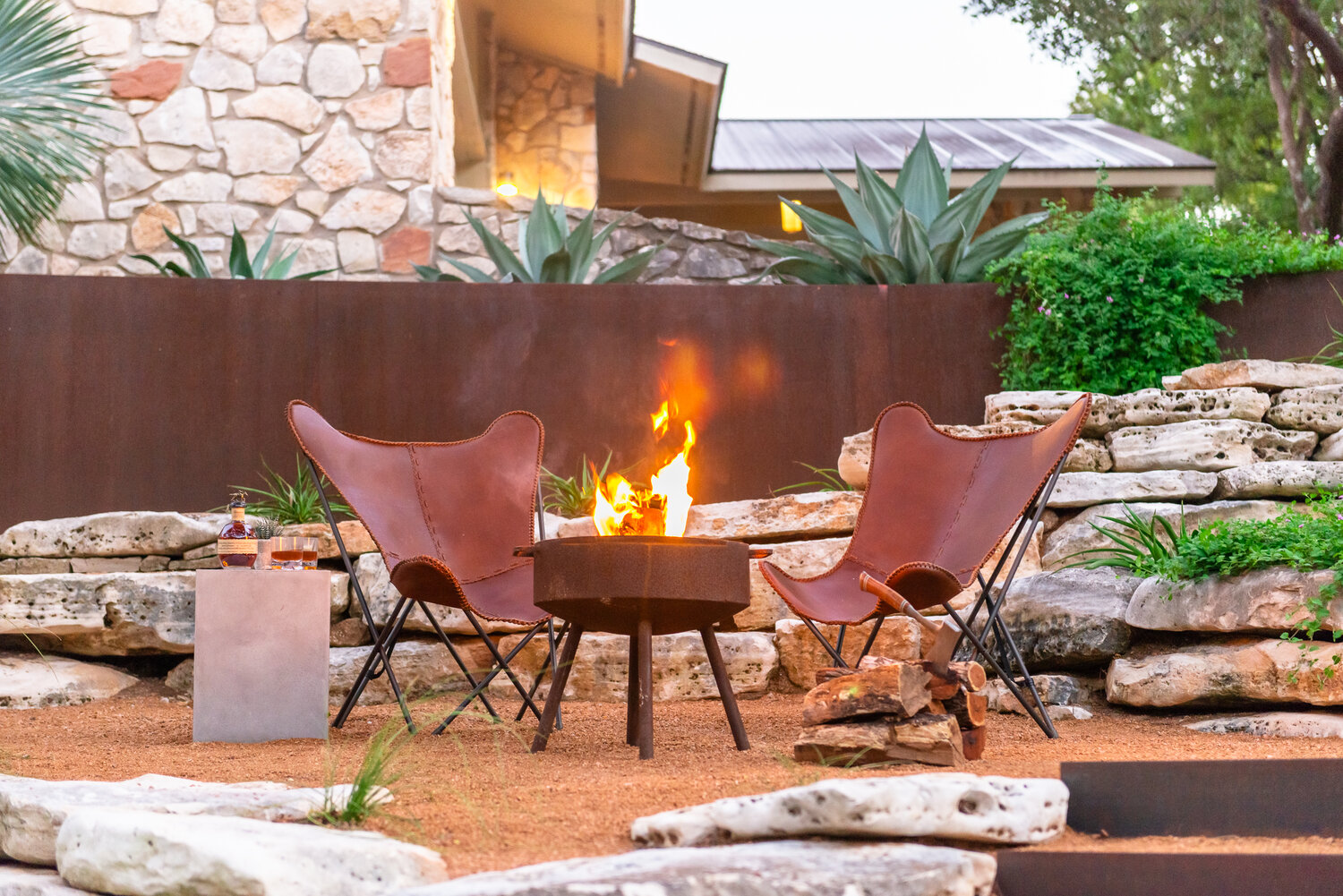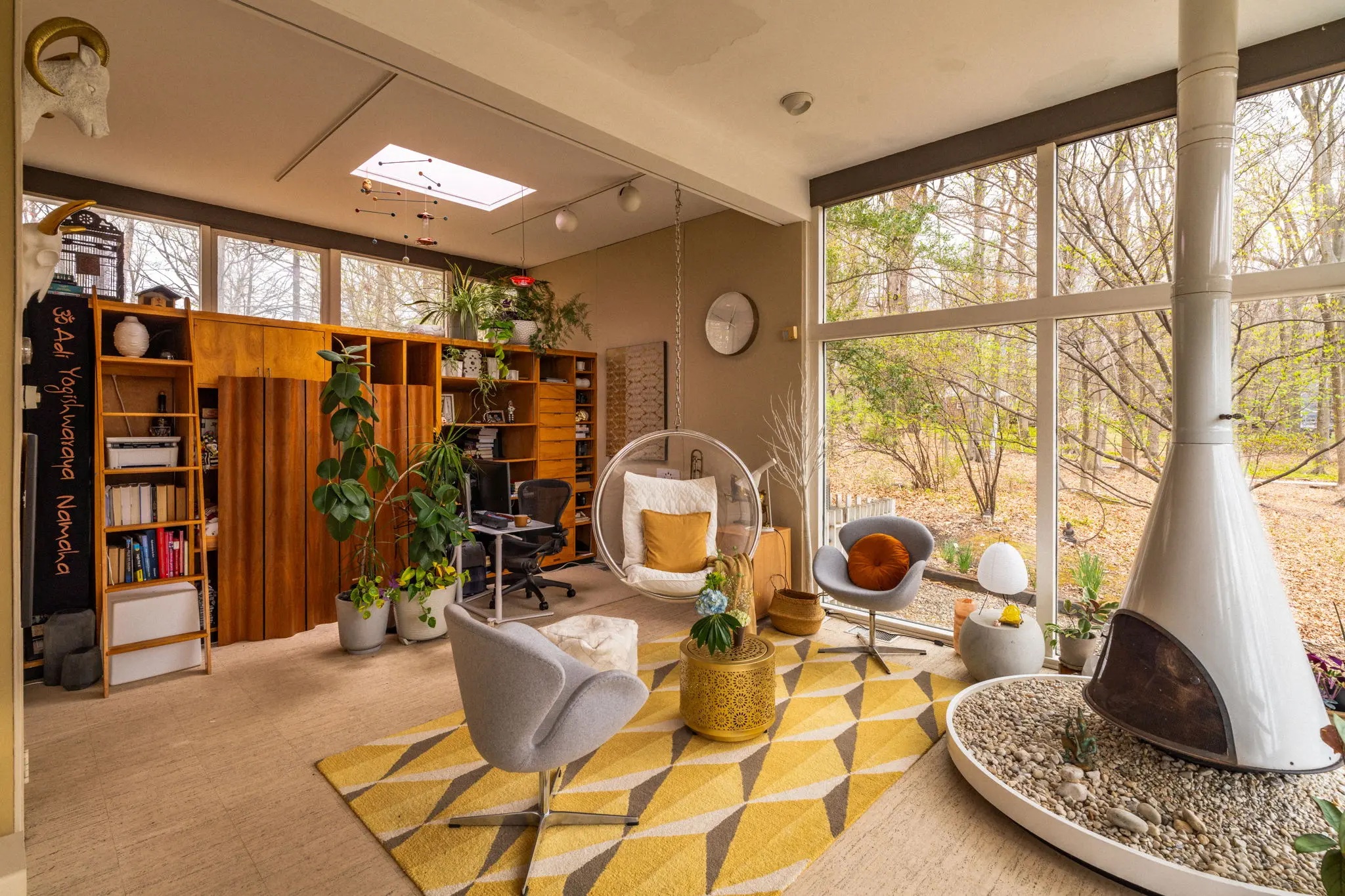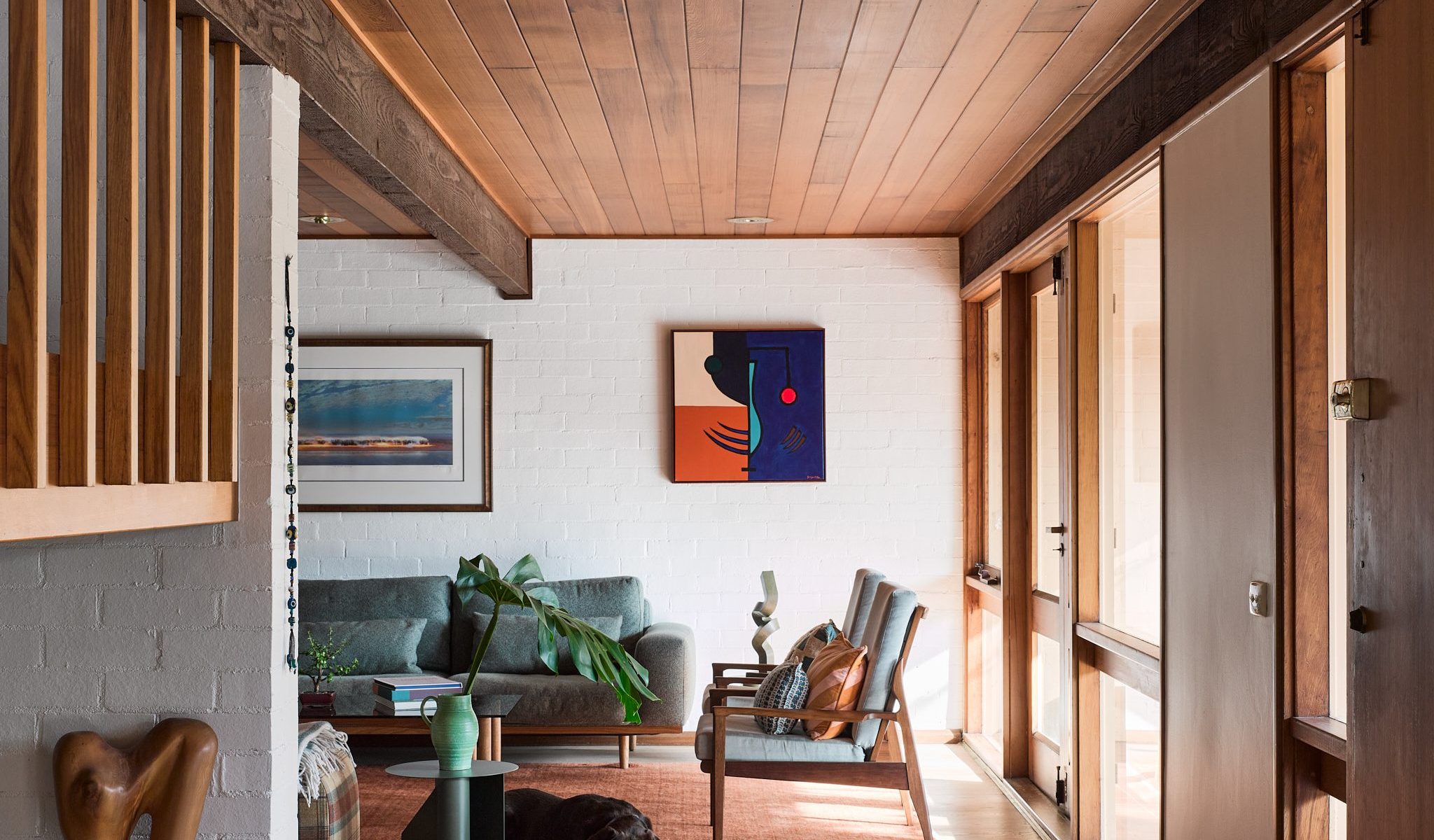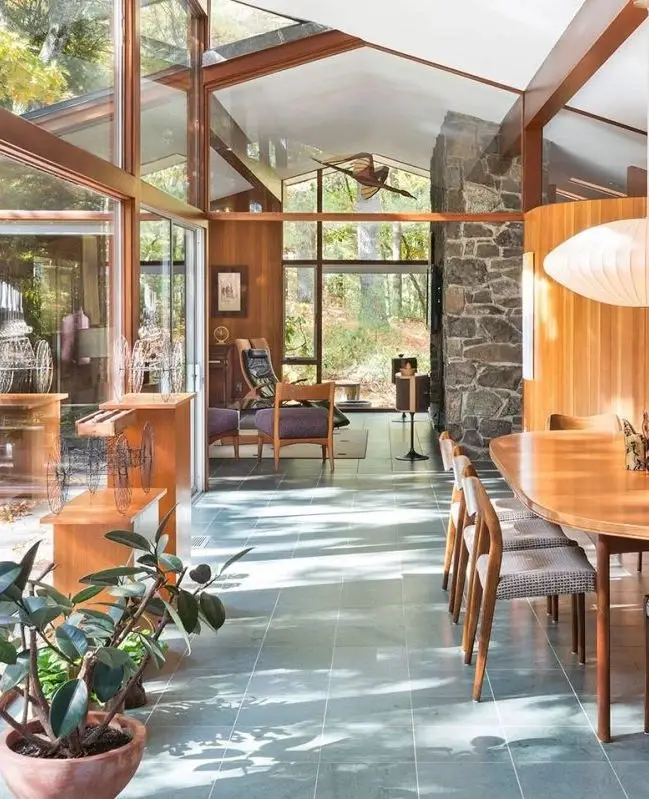
This article is part of an ongoing series exploring the key characteristics that define mid-century homes. Last week, we focused on the open layouts and floor-to-ceiling windows that blurred the line between indoors and out. This time, we’re stepping closer, into the walls, the floors, and the very bones of the home itself, to look at how natural materials give these spaces their warmth, texture, and quiet strength.
One of the most compelling qualities of mid-century modern architecture is its deep respect for materials. When used, wood, stone, and brick weren’t chosen only for their appearance but for their texture, how they aged, and how they grounded the home in its surroundings. Natural materials were celebrated not to conceal, but to reveal. Timber ceilings were left exposed. Stone walls were celebrated, not smoothed over. Over time, every surface started to tell a story.
This raw honesty was often balanced by the careful inclusion of modern materials. Concrete, steel, and glass created a clean, minimalist framework. But without the warmth of organic textures, these homes might have felt cold. Instead, the richness of walnut panels, the weight of a brick hearth, or the tactile edge of a stone wall gave these modern interiors soul.
It’s this contrast – between natural and refined, earthy and engineered – that continues to inspire homeowners today. Whether you’re restoring a mid-century home or decorating in the spirit of the era, the material palette can set the tone for everything else. It’s about choosing surfaces that feel grounded and enduring, rather than trendy or over-polished.
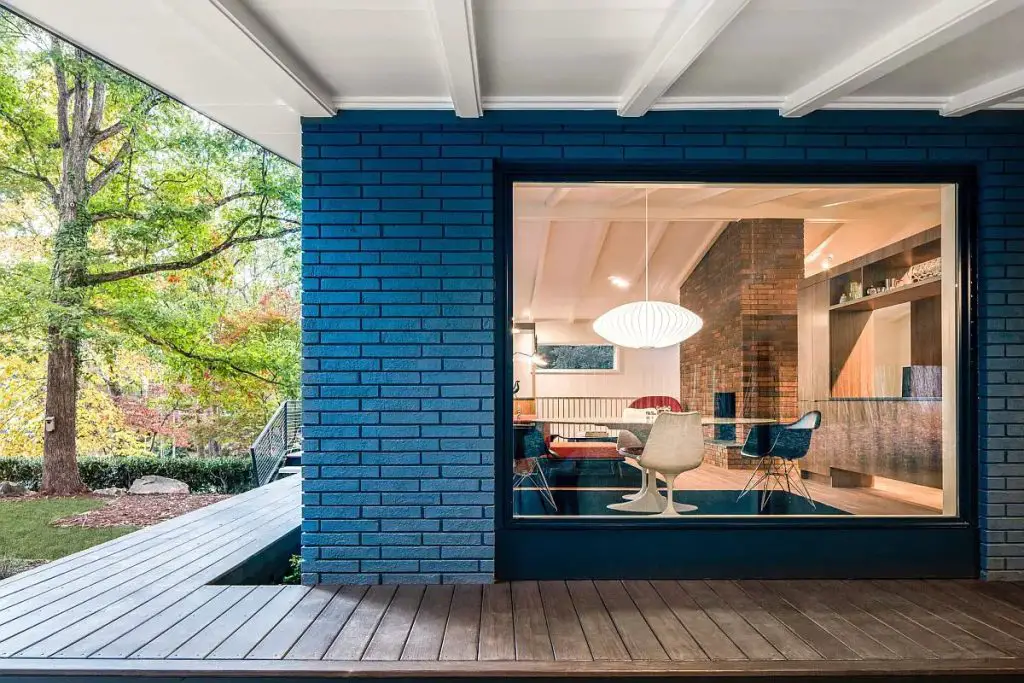
If you’re considering how to bring that authentic mid-century feel into your own space, here are a few material guidelines to keep in mind:
- Let the wood show. Whether it’s teak cabinetry, oak flooring, or cedar ceilings, natural wood should be visible and celebrated, not hidden behind layers of gloss or paint.
- Use stone with purpose. Feature walls, fireplaces, or entryways are ideal spots for stone that adds both texture and gravitas.
- Keep brick honest. Exposed brick, when done well, adds a sense of craftsmanship. Avoid painting over it unless it’s absolutely necessary or you really like them painted.
- Balance with modern elements. Don’t shy away from concrete floors, steel window frames, or minimalist cabinetry, just make sure they’re softened by the presence of natural textures.
- Stay grounded in palette. Earth tones, rich browns, soft greys, and muted creams pair beautifully with the organic character of natural materials.
These are the characteristics we look into the homes we feature because, when these materials come together, the result is a home that feels both modern and lived-in, never stark, never sterile. The way we like it.
In the next chapter of this series, we’ll explore how built-in furniture and lighting choices enhance and echo these material decisions, adding functionality without compromising on style.
